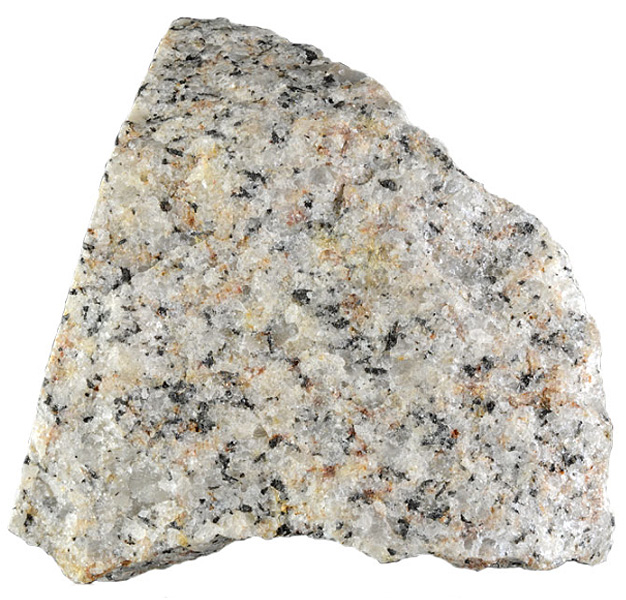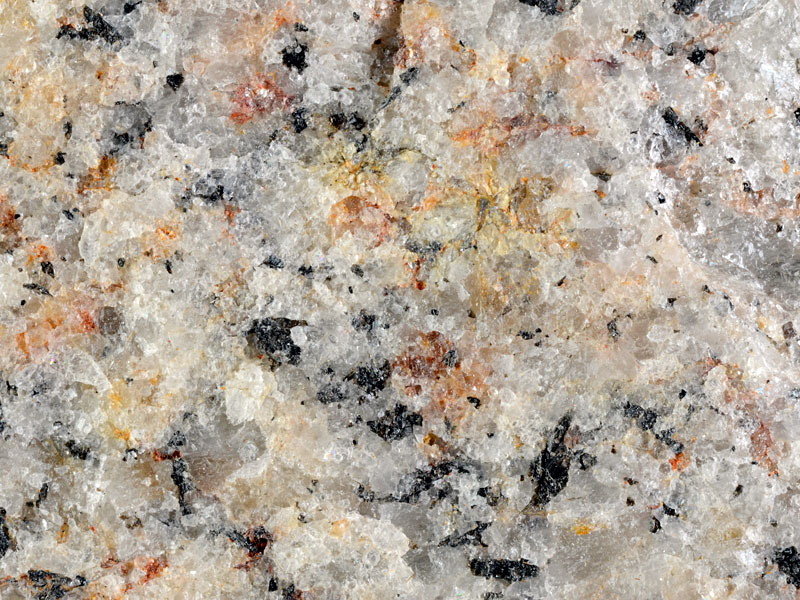
Fact sheet
This rock comes from St Mewan Beacon, Cornwall and was a loose block from a small quarry. The rock is a quartz-topaz tourmaline-rich greisen at the southern edge of the Permo-Carboniferous-age St Austell granite. The sample represents a late stage, highly silica-rich fraction of a hydrothermal saline fluid, from the roof zone of the granite, possibly trapped beneath an impermeable pelitic country rock.
The thin section contains tourmaline that changes from patchy blue and brown to colourless upon rotation — a very unusual pleochroic effect. When viewed in crossed polars the colours are bright but anomalous (not directly comparable with the standard birefringence colours) second order birefringence colours. Topaz is colourless in plane polarised light and grey in crossed polars but can be distinguished from quartz by its higher relief. Orthoclase, rare plagioclase and feldspars are also present.
The United Kingdom Virtual Microscope (UKVM) collection consists of igneous, sedimentary and metamorphic rocks from around the UK.
It is intended as a teaching resource, helping to tell the story of the common rock types and how they form, and reflecting the history of the UK at the margins of the continent of Europe. The collection is a series of teaching sets, for example igneous rocks from the North Atlantic Igneous Province and SW England; high-temperature metamorphic rocks from Scotland and low-temperature metamorphic rocks from Wales; and sedimentary rocks, including English limestones and sandstones.







